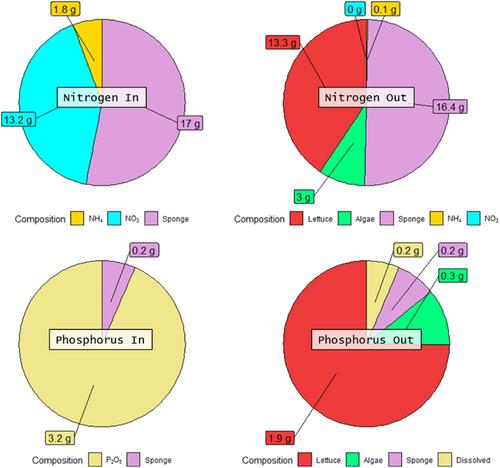Integration of algae treatment with hydroponic crop waste to reduce impact of nutrient waste streams
Abstract
Introduction
Controlled environment agriculture (CEA) is expanding globally, but little is known about nutrient losses within these systems, or how to reduce subsequent pollution. This experiment investigates the potential to treat wastewater from hydroponically produced lettuce via the application of algae.
Materials and Methods
A total of 132 heads of lettuce were produced in the 4-layer nutrient film technique (NFT) vertical farming rack. Waste from the hydroponic system was used to cultivate naturally occurring algae. Nitrogen (N), phosphorus (P) and other trace elements (Ca, Co, Cu, Fe, K, Mg, Mn, Mo, Ni and Zn) were measured at each stage of production.
Results
Overall the nutrient use efficiency (NUE) of applied mineral nitrogen (N) and phosphorus (P) was 88.7% and 59.4%. After algae treatment of waste streams the full system NUE of N and P was 99.5% and 95.0% respectively, thus significantly reducing waste heading for sewage. It was found that the crops consumed large quantities of Ca, Cu, Fe and Zn from the rooting sponges used in this experiment, which may have become available due to mineralization and the presence of slightly acidic fertiliser solution. The overall waste produced by the rooting sponge is of concern regarding the full NUE of the system, accounting for approximately 53% and 6% of the total N and P input into the system.
Conclusions
This study highlights that treating wastewater streams from controlled environment agriculture (CEA) methods such as hydroponics with algae is successful and easy to achieve with little effort. Future efforts by researchers and the CEA industry to better manage nutrient streams is recommended to improve the environmental credentials of developing CEA systems.


 求助内容:
求助内容: 应助结果提醒方式:
应助结果提醒方式:


